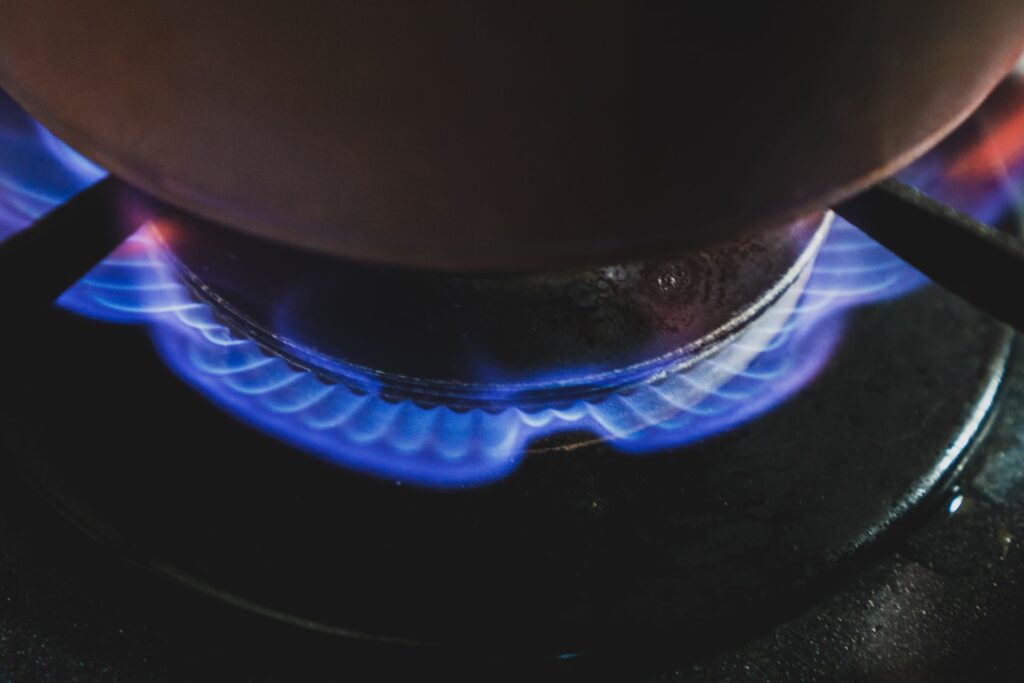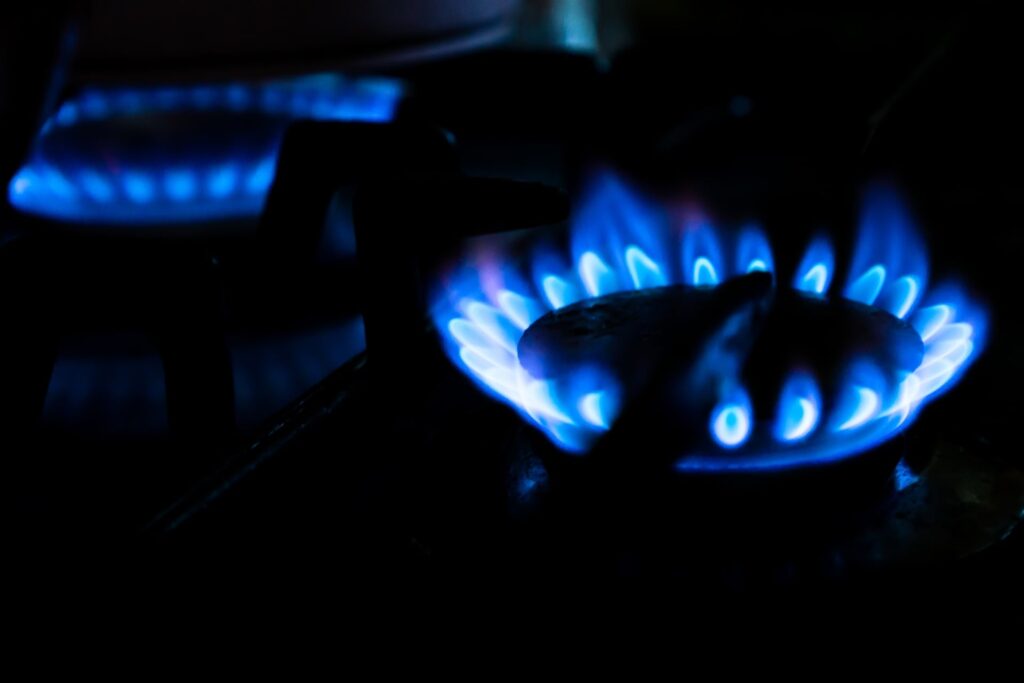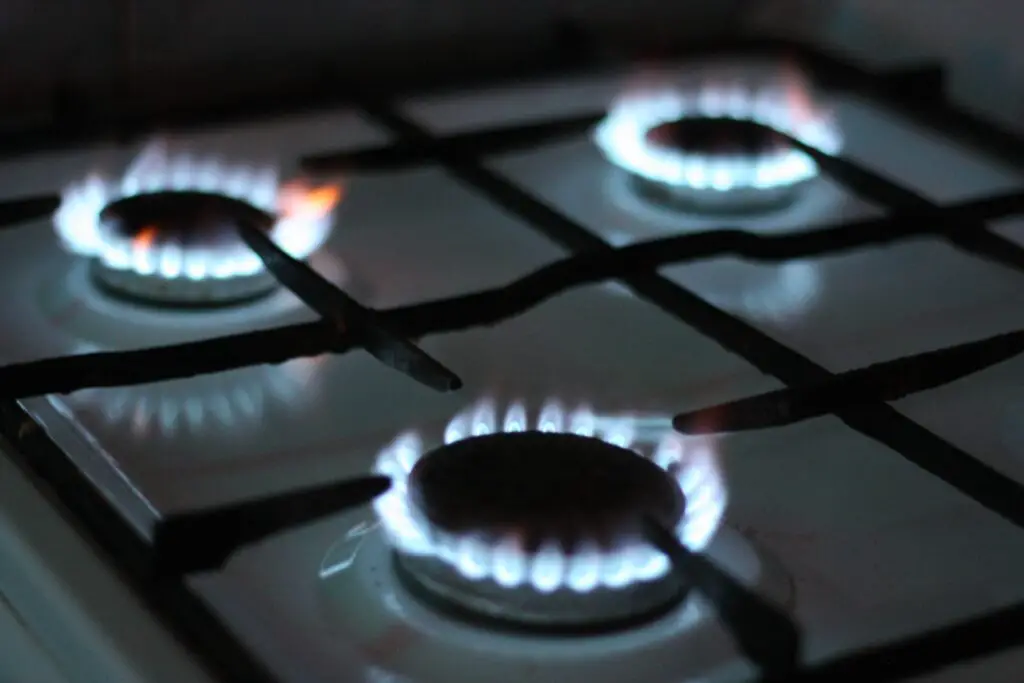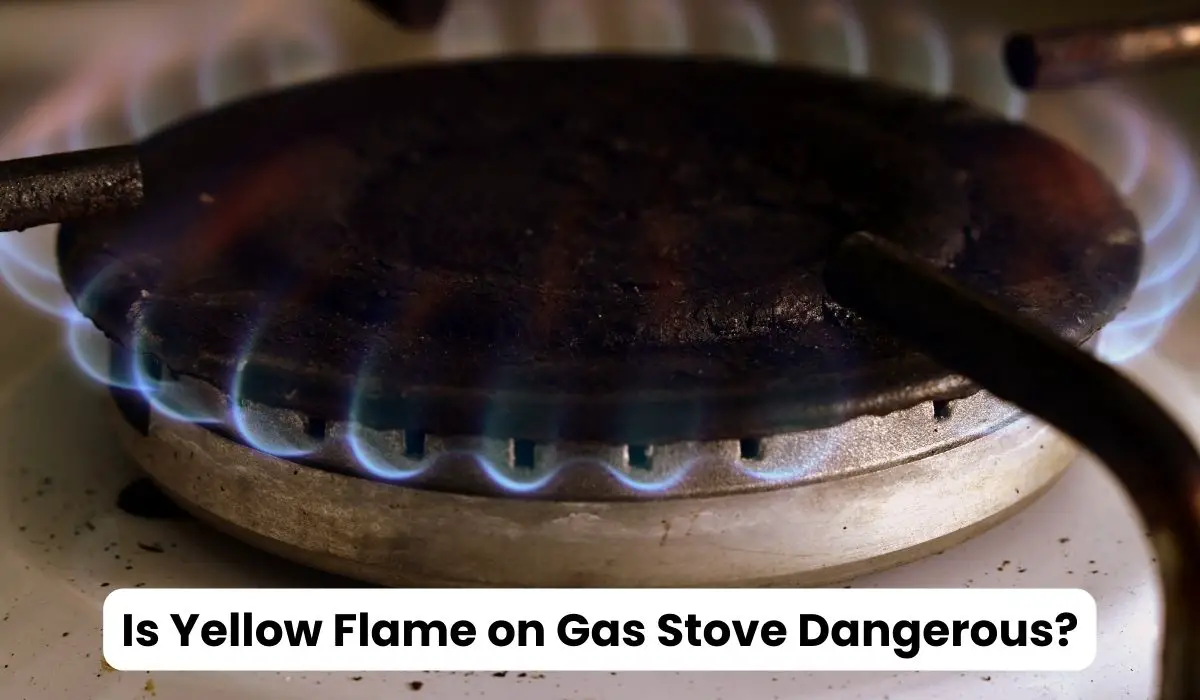Regarding the safety of our homes, few things are as essential as our gas stoves. We rely on them daily to prepare meals, but how often do we stop to consider the colour of the flame burning beneath our pots and pans? Many of us might have noticed a yellow flame instead of a blue one on our gas stoves and wondered, “Is a yellow flame on a gas stove dangerous?” In this article, we’ll delve into the reasons behind yellow flames, their potential hazards, and what to do if you encounter one.
A gas stove provides a controlled environment for burning natural gas or propane to produce heat for cooking. The colour of the flame is a crucial indicator of the combustion process, with blue flames being the most desirable due to their efficient and safe combustion. However, a yellow flame can raise concerns about the safety and efficiency of the gas stove.
Table of Contents
Understanding Gas Stove Flames:

1. The Ideal Blue Flame
The ideal gas stove flame is blue, indicating that the gas burns wholly and efficiently. This blue colouration signifies the right balance between the air and gas mixture during combustion.
2. Factors Affecting Flame Color
The flame colour can be influenced by various factors, including the type of gas being burned, the air intake settings, and the cleanliness of the burners. Alterations in these factors can lead to a shift from blue to yellow flames.
Why Does the Flame Turn Yellow?

1. Air-fuel Mixture Imbalance
One common reason for a yellow flame is an imbalance between the amount of air and fuel in the combustion process. This can be caused by partially clogged burners or incorrect air shutter settings.
2. Carbon Monoxide Concerns
Yellow flames can also indicate the presence of carbon monoxide. This colourless and odourless gas can be dangerous in high concentrations. While a yellow flame itself doesn’t necessarily mean high carbon monoxide levels, it should be investigated further.
Is Yellow Flame on Gas Stove Dangerous?

Yes, a yellow flame on a gas stove can indeed be dangerous. While gas stoves are a standard fixture in households and are generally safe to use, a yellow flame indicates that something might be amiss with the combustion process. The colour of the flame in a gas stove is crucial because it signifies whether the combustion is occurring wholly and efficiently. In a properly functioning gas stove, the flame should be predominantly blue, indicating that the gas is burning cleanly and producing minimal harmful byproducts.
Preventing Yellow Flames and Ensuring Safety:

To prevent yellow flames and ensure the safety of your gas stove usage, follow these tips:
- Schedule regular professional maintenance.
- Keep the burners and gas ports clean and free from debris.
- Monitor for any changes in flame colour or patterns.
- Install a carbon monoxide detector in your kitchen.
How To Fix Yellow Flame On Gas Stove:
Here’s a guide on how to fix a yellow flame on a gas stove:
1. Check for Proper Gas Supply
Before diving into any troubleshooting, make sure your gas supply is stable and sufficient. A weak gas supply can result in a yellow flame. Confirm that the gas valve is fully open and there are no issues with the gas line.
2. Clean the Burner
A yellow flame can often be caused by dirt, debris, or food particles clogging the burner openings. Turn off the gas supply and let the stove cool down. Remove the burner grate and cap, and then gently clean the burner with a soft brush or a toothbrush. Ensure that all the openings are clear of any obstructions.
3. Inspect the Gas Mixture
Gas burners require a precise mixture of gas and air to produce a blue flame. A yellow flame indicates an improper mixture. Check if the air vents on the burner are blocked or clogged. Clear any obstructions and make sure the burner components are correctly aligned.
4. Adjust the Air Shutter
Most gas stoves have an air shutter located near the burner. This adjusts the amount of air mixed with the gas. If your flame is yellow, you may need to open the air shutter slightly to allow more air into the mixture. Gradually adjust the shutter while observing the flame until it turns blue.
5. Inspect for Gas Pressure Issues
In some cases, low gas pressure can lead to a yellow flame. Contact your gas provider to check the pressure levels. If the pressure is inadequate, you might need a professional technician to address the issue.
6. Check for Ventilation
Inadequate ventilation can also cause yellow flames. Ensure that the area around the stove is well-ventilated and free from any blockages. Proper ventilation promotes better combustion and a bluer flame.
7. Avoid Using the Wrong Cookware
Using a poor type of cookware can affect the flame colour. Cookware that doesn’t evenly distribute heat can cause incomplete combustion, leading to a yellow flame. Opt for cookware with flat and even bottoms to ensure proper heat distribution.
8. Professional Inspection
If you’ve tried these steps and the problem persists, it’s best to consult a professional technician. There might be internal issues with the gas supply system or the stove that require expert attention.
9. Regular Maintenance
To prevent future yellow flame issues, incorporate regular maintenance into your routine. Clean the burners and components periodically, and ensure the gas supply lines are clear and functioning optimally.
By following these steps, you can resolve the issue of a yellow flame on your gas stove. Remember, safety is paramount when dealing with gas appliances, so always exercise caution and, when in doubt, seek professional assistance.
Preventing Yellow Flames on Gas Stoves:
Conclusion:
A yellow flame on a gas stove can indicate incomplete combustion and potential hazards. While not every instance is immediately dangerous, addressing the issue promptly and taking preventive measures is essential to ensure your safety. Regular maintenance, proper ventilation, and professional assistance are vital to keeping your kitchen safe for culinary adventures.
Remember, your safety is paramount. If you encounter consistent yellow flames and a strong gas smell, don’t hesitate to seek professional help. Following these guidelines, you can enjoy cooking on your gas stove with peace of mind.
FAQs
Can a yellow flame be harmless?
While a yellow flame is a potential sign of incomplete combustion, it’s not necessarily harmless. It can lead to the production of carbon monoxide and other safety hazards.
Is it safe to continue using the stove with a yellow flame?
It’s recommended to avoid using the stove with a yellow flame. Address the issue promptly by identifying and rectifying the cause.
How often should I clean my gas stove?
Regular cleaning is essential. Wipe down the stove after each use and perform a deeper cleaning at least once a month.
Can a yellow flame affect indoor air quality?
Yes, a yellow flame can produce pollutants that affect indoor air quality. Carbon monoxide and soot can pose health risks.



